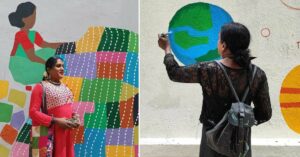Go Beyond Channapatna: 6 Other Amazing Indian Toys You Must Try
The indigenous toys from each region of India are not only made with eco-friendly materials but also are aesthetically pleasing.

Despite India’s toy-making enterprise dating back to the Indus Valley Civilisation, the global and national market slice of locally-made toys is dismal. Our country, with its USD 1.75 Billion market, imports the bulk of its toys from China and Taiwan.
In a world where superhero comics, movies and books afford licensing opportunities to toymakers to rake in millions of dollars, it casts a sad shadow on the Indian toy market scene. With parents turning more eco-friendly in their choices for their children and ‘Vocal for Local’ bid gaining steam in India, it is time that we work to revive and embrace the craftsmanship of indigenous and heritage toys of our country.
Though Karnataka’s Channapatna toys, with their Geographical Indication tag, are known far and wide, here is a list of other Indian toys that still echo the eras gone by and have the potential to charm the world.
1. Kondapalli Toys – Andhra Pradesh
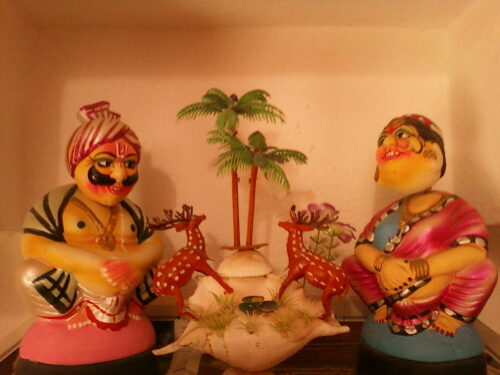
Kondapalli is a town in the Krishna district of Andhra Pradesh. The city has a 400-year-old toy-making tradition passed from generation to generation. These toys are made with the softwood from the Tella Poniki tree, which the skilled artisans craft into toys based on many themes, especially Indian mythology.
Artisans paint the toys or figurines with soft and thin brushes dipped in water or oil colours. The toys showcase animals, life scenes, rural folks, gods and characters from epics. Soldiers, Ambari elephants, Dasavatar set and pen stands are some of the more popular items.
2. Thanjavur Dolls – Tamil Nadu
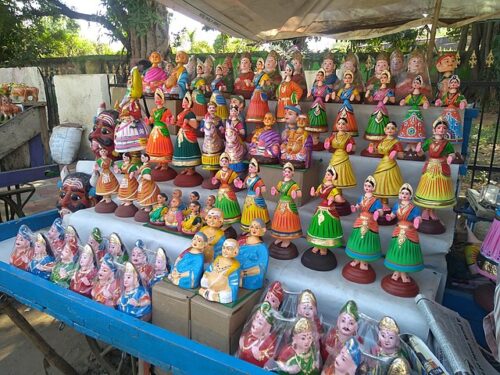
The iconic Thanjavur doll comes from the Thanjavur district, Chennai, Tamil Nadu. The craft of the doll is an ancient skill where few or no tools are used to handcraft the figurines. The unique feature about the Thanjavur Doll is that it is a combination of roly-poly and bobblehead dolls. Bobblehead dolls have a head larger than the body, and when hit, roly-poly dolls bounce back and forth but come back into a standing position.
The craft of the Thanjavur Doll or as it is called in Tamil — Thanjavur thalayatti bommai (Thanjavur head-shaking doll) dates to the early 19th century Kingdom of King Saboji. The heritage doll is traditionally made with terracotta and cast as a pair of king and queen in a doll-like semblance which symbolises the dynasties that ruled Thanjavur. The dolls are also made with wood pulp, plaster of Paris, marble, alabaster, and papier-mache.
Artisans use clay from the banks of Cauvery River near which Thanjavur is settled.
3. The Wooden Toys of Varanasi – Uttar Pradesh
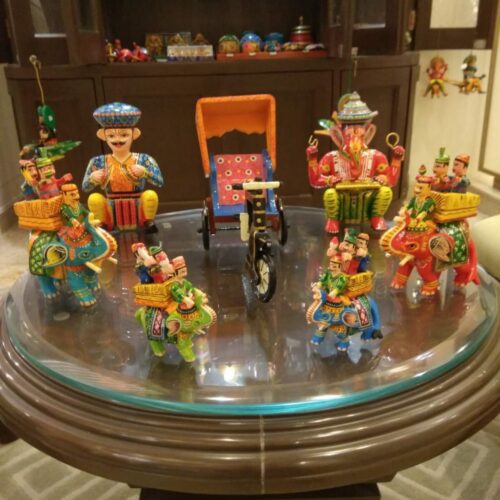
Uttar Pradesh’s Varanasi and Mirzapur are renowned for their wooden toys whose designs are made with the natural veins of the wood. Made without any joints, the beautiful toys are an ancient craft and are cast in shapes of animals, birds, musicians and dancers.
Using knives, chisels and hammers, the artisans cut, peel and shape shisham or eucalyptus wood to create these toys which can be spherical, and cylindrical or the more traditional and religious articles, vermillion cases, or deities. These intricately carved toys are primarily made to catch the eyes of the pilgrims and foreigners.
4. Asharikandi Terracotta toys – Assam
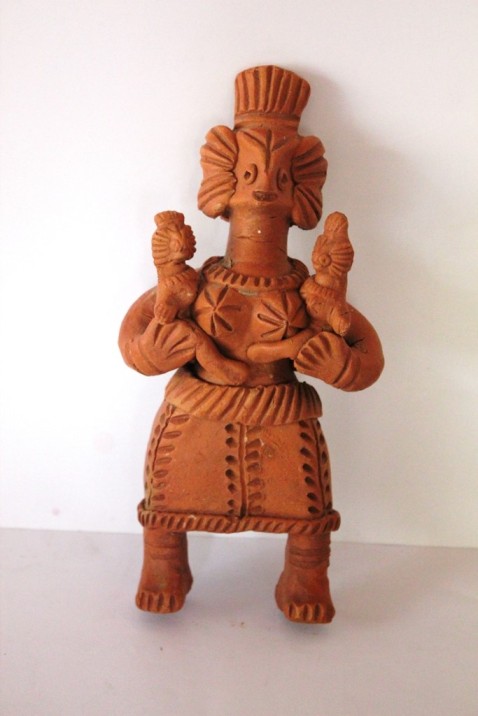
The traditional toys in Assam are made with clay, bamboo, pith, cloth and mud in the figures of brides and grooms, animals, birds and deities. But one of the most famous dolls found in the region is from Asharikandi.
Located 2,500 km east of the ancient city of Harappa lies the village of Asharikandi in Assam’s Dhubri district. It’s nearness, and the consequent influence of the prehistoric Indus Valley Civilisation site is evinced in the heritage craft of terracotta toys.
More than 200 artisan families in the village are involved in this ancient craft keeping the tradition alive. The Hatima Putul, literally a mother with elephant-like ears with a baby on her lap, is one of the most distinctive creative features of Asharikandi. In the early 1970s, Nilima Baruah, the sister of filmmaker Pramthesh Baruah christened the doll as Hatima Putul. The name sprung from watching the elephant-like ears of the mother.
5. Natungram Dolls – West Bengal

Natungram, a quaint village in the district of Burdwan which is about four hours’ drive from Kolkata, is one of the few areas in southern West Bengal where the age-old tradition of doll making has been retained to an extent.
Crafted from a piece of wood chiselled to the requisite length, the doll gets the face and its attire painted on it and preserves a rustic beauty. The Gour-Nitai dolls are one of the distinct types of these dolls which came from the wave of Bhakti movement in Bengal in the 15 and 16th century. These dolls were a pair of male figures with hands outstretched over their heads representing Chaitanya Mahaprabhu (Gour) and his disciple Nityananda. Another famous doll is the small soldier figurines which were the influence of the royal kingdom of Burdwan.
Initially, the artisans strictly used conventional colours like red, green and yellow but recently with the popularity of these dolls as room décor overshadowing their religious appeal, artists have been able to branch out from these conventions and use their palette liberally. Apart from these traditional standalone dolls, the artisans now incorporate these traditional dolls into furniture pieces.
6. Dolls of Vilachery – Tamil Nadu
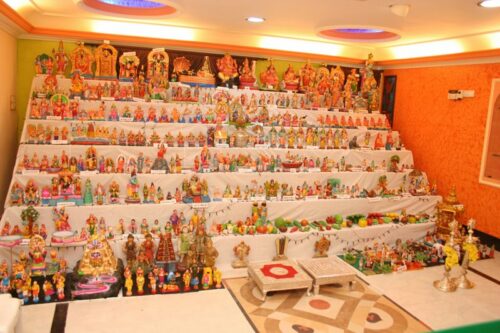
For more than eight decades, the Vilachery doll makers have been carrying forward the legacy of their families of clay and paper mache golu dolls for the Navratri season. Around 300 families line up their homes with golu dolls of various shapes and sizes. The skilled craftsmen mould the dolls as gods, goddesses, and characters from epics, folk tales and mythology. They are then sun-dried. The artisans then paint them with two coats of bright colours and can complete a doll in three to five days.
The golu dolls are of sentimental value to the people who buy them and are cherished for their aesthetics.
There is no denying the fact that toys and games can potentially improve cognition, creativity, imagination, and problem-solving skills among children and even adults. Additionally, there has been an increase in demand for eco-friendly toys in India in recent times.
If we look at the indigenous toys from each region of India, we realise that they are not only made with eco-friendly materials (clay, cloth, wood and palm leaf, among others) but also are aesthetically pleasing and can fire the childish imagination and creativity.
(Edited by Gayatri Mishra)
This story made me
- 97
- 121
- 89
- 167
Tell Us More
We bring stories straight from the heart of India, to inspire millions and create a wave of impact. Our positive movement is growing bigger everyday, and we would love for you to join it.
Please contribute whatever you can, every little penny helps our team in bringing you more stories that support dreams and spread hope.







